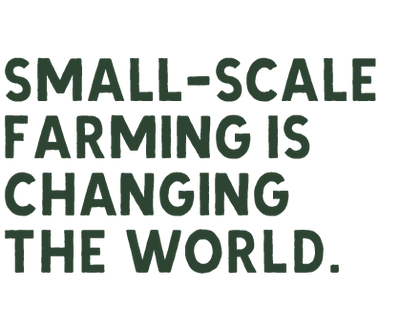Text by Dany Bouchard, Académie Potagère
Images by Charles Dion
Has the spring rush hit you in recent weeks? If so, it's perfectly normal, it's a condition that affects all gardeners and market gardeners and from which there is no cure. It translates into a strong desire to get back into gardening in order to have a front row seat to the exceptional growth of vegetable plants. If you are planning to start a small garden for the first time, let me guide you through the process with five basic tips.
The vast majority of plants in a vegetable garden prefer maximum sunlight. Although some require shady conditions, most plants only reach their full potential when they are exposed to direct light for at least eight hours a day. So take the time to look around your home to determine where your garden will get the most sun. Don't hesitate to ask your neighbours if you can use some of their sunny land in exchange for some crops! Use this exercise to determine the size of your future vegetable garden. Don't aim for too big to start with - it's better to start a small garden in control than to lose control of a large one. This way, you will gain confidence and can decide to expand the growing area the following year.
2. Plan
Regardless of the size of your garden, you will save time and effort by planning its structure before the season begins. This is the most important step to a successful garden and often the most overlooked - here are some questions that can guide your planning.
What to plant? Some crops are easier than others to succeed with when you first start out - tomatoes, herbs, cucumbers, beans, radishes and arugula are good choices. They will bring diversity and freshness to your plate.
Where to plant in the garden? Some plants can become very tall in mid-summer, such as tomatoes, climbing beans and sweet peas. Plant them on the north side of your garden so they don't shade lower crops. Also, consider the space used when the plant is mature to give it enough room. You may be in for a nasty surprise if you place a squash plant in the center of the garden! A scale plan will be very helpful when planting.
When to plant? Not all regions follow the same planting schedule. Similarly, vegetable plants also require different planting times. For crops that tolerate cool temperatures (radishes, carrots, sweet peas, cabbage, celery), you can incorporate them into the garden up to four weeks before the last frost. On the other hand, cold-sensitive crops (tomatoes, cucumbers, zucchini, peppers, basil) will have to wait until the ground frosts are over. Your patience will be rewarded!
3. Setting the stage
April is a great month to get started, since the temperatures are perfect for working outdoors. If you are growing in the ground, chances are the soil is suffering from compaction. Take a tool to loosen the soil, such as a Broadfork, a rake or a spade. This will allow the roots to grow deeper and will also allow water to penetrate the soil better instead of running off on the surface. Afterwards, incorporate a large dose of quality compost. It promotes the rapid development of microbiological activity in your soil and provides some of the nutrients needed for plant growth. To this, add an organic fertilizer that will directly feed your crops. With an oscillating hoe or rake, incorporate these two ingredients into the top five centimetres of soil. Uniform soil preparation is usually a source of pride for gardeners and a guarantee of success for the future.
“Creating your own vegetable garden is a long-term investment. Stay humble and don't expect to succeed immediately. ”
4. Choose your seeds and plants
On one hand, I urge you to avoid generic seeds from department stores. Instead, prioritize the purchase of organic seeds produced by artisans who are committed to the preservation and improvement of "genetics." In fact, many local farms produce high quality seeds, at competitive prices and with home delivery for the majority. On the other hand, as with seeds, not all plants are created equal.
5. Surround yourself, inform yourself, learn
As with any project, knowledge is your greatest ally. For novices, it is often rewarding to rely on intuition. Otherwise, if you want to avoid classic mistakes, you will benefit from building your foundation from the experiences of others before you. Books, trainings, and tutorials contain a wealth of information that can help you on this journey. Don't forget to call on those around you who can answer your questions as the season progresses. These resources are invaluable and will help build your experience.
***





